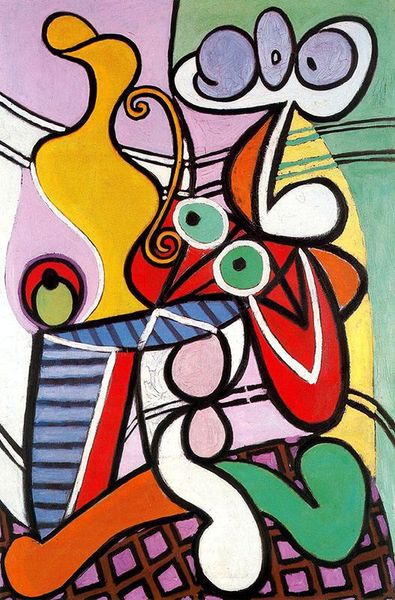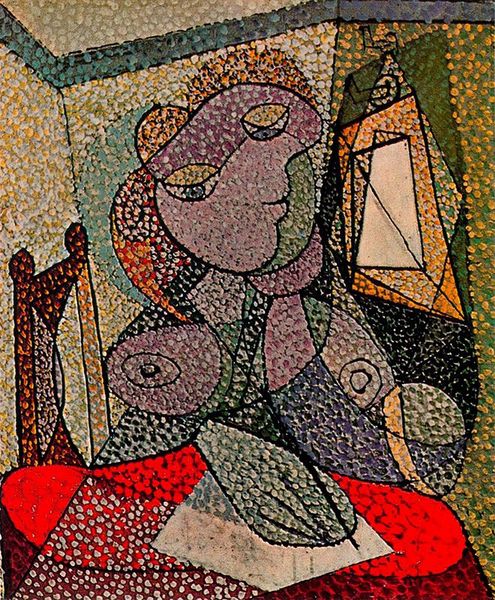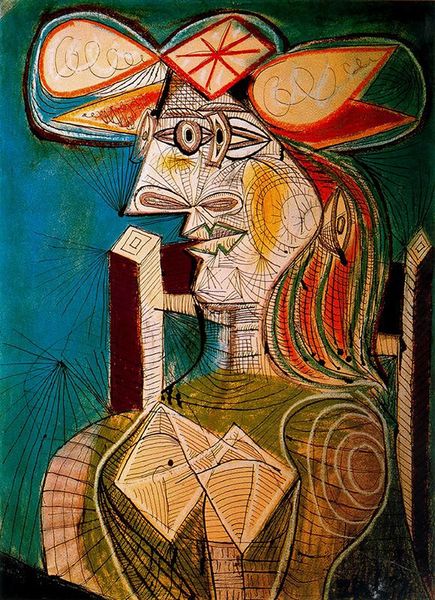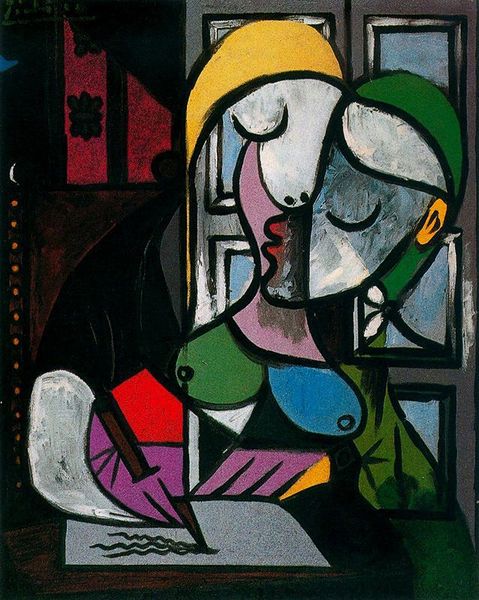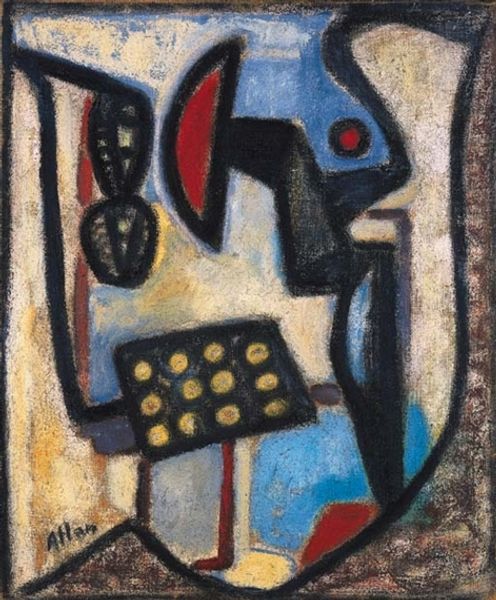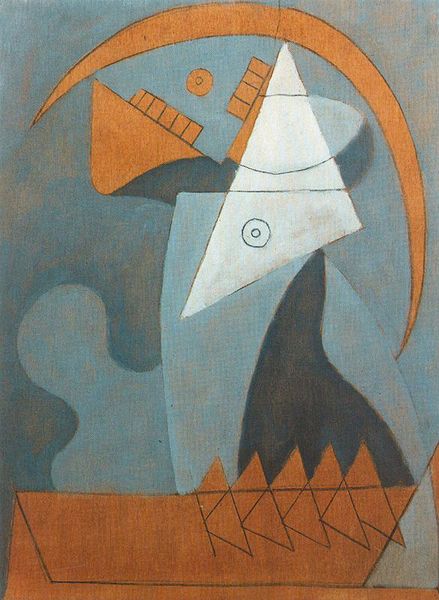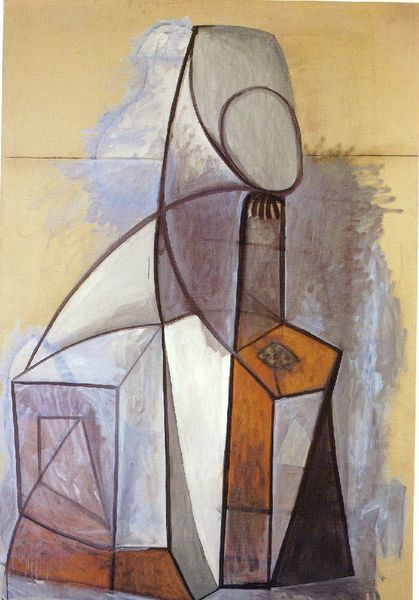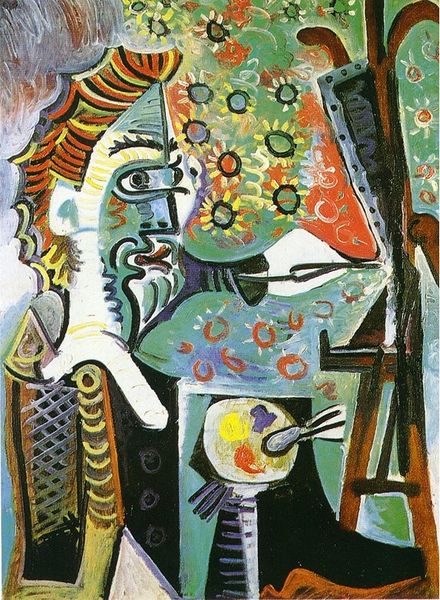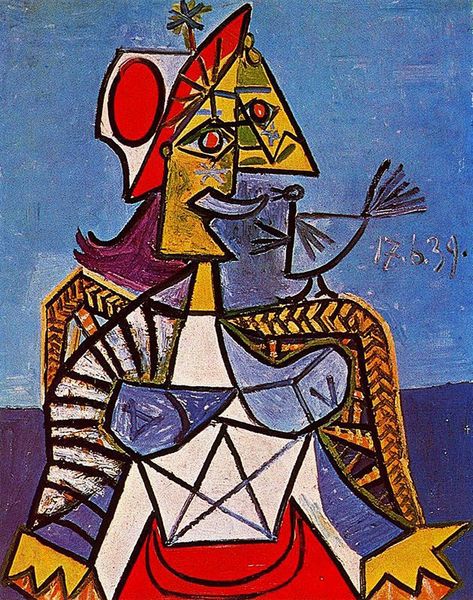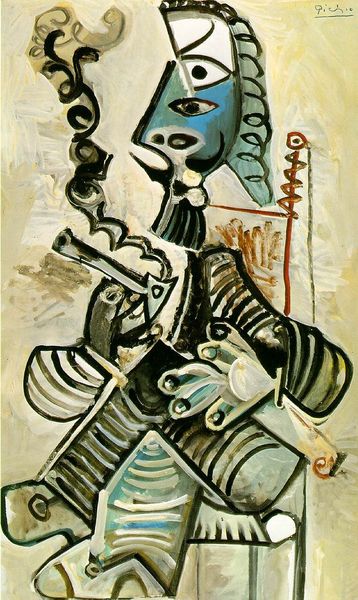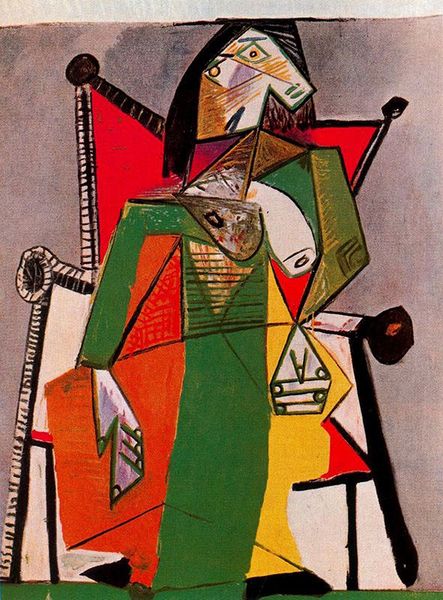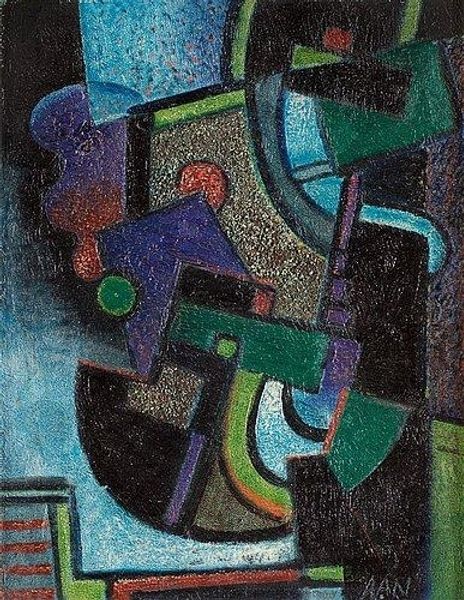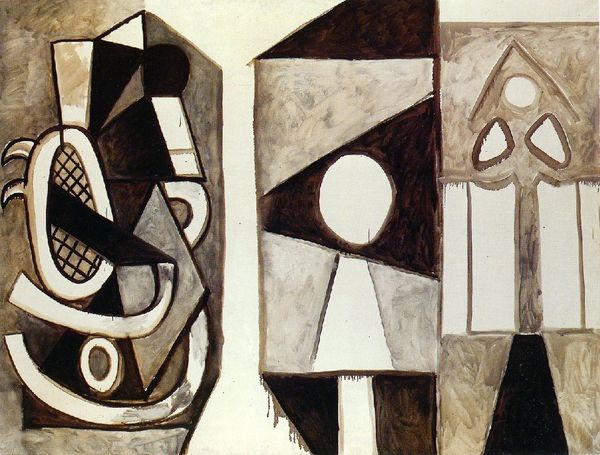
painting, oil-paint
#
cubism
#
painting
#
oil-paint
#
geometric
#
abstraction
#
modernism
Copyright: Pablo Picasso,Fair Use
Editor: We're looking at Pablo Picasso's "Still life on a table" from 1947, an oil painting that exemplifies cubism. It strikes me as a fascinating exercise in geometric forms and layered perspectives. How do you approach interpreting a work like this? Curator: My focus gravitates towards the formal elements themselves. Observe how Picasso disrupts conventional representation by fracturing the objects and rearranging them across the canvas. Note how he is doing it using a restricted palette of blues, reds and muted browns. Editor: Yes, the way he’s flattened the space and presented multiple viewpoints simultaneously is quite striking. Curator: Precisely. The interplay of these fragmented shapes, textures, and the calculated use of color serve to create a dynamic composition that challenges our perception of reality. Editor: So you're less concerned with what the objects are meant to represent and more with how they contribute to the overall visual experience? Curator: To a great extent. It’s about understanding the language of art—the semiotics of form. Do you see any particular relations, contrasts, or juxtapositions? How is the arrangement of shapes on the surface contributing to that ‘visual experience’? Editor: I notice the stark contrast between the geometric patterns and the more organic shapes of what appears to be fruit or foliage. Curator: And what might that contrast signify within the composition? Does it disrupt the surface? Does it emphasize other parts? Editor: Interesting! Thinking about those elements and how they’re working together makes it less daunting to look at something abstract like this. Curator: Indeed, it transforms the abstract into a coherent, expressive system. Seeing the components this way helps refine our perception and open the way to a deeper comprehension of the work.
Comments
No comments
Be the first to comment and join the conversation on the ultimate creative platform.

